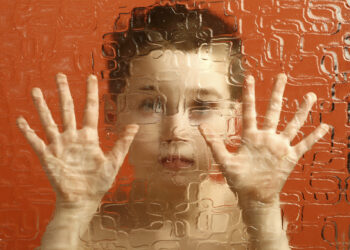Urinary Tract Infections
What is a Urinary Tract Infection (UTI)?
A urinary tract infection (UTI) is a common bacterial infection which causes illness in infants and children. In children under the age of 3, it can be very difficult to recognise because the signs and symptoms are often non-specific. Lots of children get UTIs but it is important that these infections are accurately diagnosed and treated to reduce the chance of any complications.
Does my child have a UTI?
There are many different signs and symptoms your child may present with when they have a UTI, and these change depending on how old your child is. It is important that you are able to recognise these symptoms and arrange to see your doctor if you are concerned. These could include fever and crying in babies and young infants, poor feeding, abdominal pain, bed wetting and smelly urine amongst others.
How is a UTI diagnosed?
If a UTI is suspected, a sterile urine sample needs to be collected in a specific container given to you by your health practitioner. Diagnosing a UTI in a child under the age of 3 can be difficult because it is challenging to obtain a sterile urine sample.
Dipstick test
Initially, this will be dipstick tested – a stick is dipped in your child’s urine and if there are any white blood cells (leucocytes) or nitrites present, that this may indicate that your child has a UTI, and further tests need to be carried out as these are often present in a typical urinary tract infection.
Urine Culture & Microscopy
If your child is under the age of 3, their urine will be sent for culture and microscopy which will be allow a definitive diagnosis of UTI to be made. Urine culture and microscopy is more reliable than a dipstick test because it allows any bacteria which is causing the infection to be identified, counted and then appropriate treatment can be decided on. It often takes one or two days for the results, and up to 7 days for this information to be relayed back to your health professional.
However, if the dipstick test was positive, your clinician strongly suspects your child has a UTI, or your child has had UTIs in the past, then the clinician may not wait for the results of urine culture and microscopy to come back before initiating treatment.
How are urine samples collected?
It is important that a urine sample is collected correctly as it will affect how your child is treated and investigated. First, wash your hands and the child’s genital area using soap and water. Do not touch the open rim of the bottle/syringe as this could affect the quality of the sample.
Babies
Clean catch:
The recommended method of urine collection is a clean catch – have the open bottle ready and catch a urine sample as your baby urinates (often when their nappy is removed). This method requires a lot of patience, but is very good because it minimises the risk of infection.
Urine collection pad:
If the clean catch method is unsuccessful, a urine collection pad can be used. Follow the instructions on the pack carefully. It is important to check the pad for urine every 15 minutes and replace it every 30 minutes to avoid contaminating the sample. Once urine has been passed, use the syringe to suck the urine sample from the pad and insert in the bottle provided.
In a very sick baby, a suprapubic catheter (a hollow flexible tube inserted directly into the bladder through a cut in the tummy, a few inches below the belly button) may be inserted to obtain a urine sample.
Toddlers
It is much easier to collect urine from toddlers from a washed up potty than using the clean catch method or a urine collection pad. Ensure that you wash the potty thoroughly in hot water and washing-up liquid, rinse it under a tap and allow it to air dry. There is no need for bleach, antiseptics or rinsing with boiling water – all of these methods are ineffective.
Older children
In older children, the preferred method of urine collection is a mid-stream urine sample (MSU). A mid-stream sample means that the first and the last part of the urine that comes out should not be collected as it can be contaminated with bacteria from either your hands or the skin around your urethra (the tube where urine comes out). Ask your child to start urinating, then collect a sample “mid-stream” in the sterile bottle provided. Disposable sterile plastic funnels may be provided to make this process easier for girls.
A sample using the clean catch method from a cleaned child is usually satisfactory and often easier to collect than MSU.
What happens once urine has been collected?
Treatment
If there is high clinical suspicion and/or initial investigations suggest a UTI, your child will be started on a course of antibiotics for 7-10 days. Usually this is given orally, but if your child is vomiting or not tolerated oral antibiotics, they may require hospital admission to receive these drugs intravenously (through a vein).
In some cases, children may experience recurrent UTIs. This is more likely in younger children (<6 months) and girls. Recurrent UTIs may require further investigation and prophylactic (preventative) antibiotics.
Will my child need any investigations?
Most children who have a UTI have normal kidneys, and they are not harmed during the course of the infection. However, it is sometimes appropriate to carry out different investigations following an infection, in case there is an underlying kidney problem. These investigations include an ultrasound scan of the urinary tract, a DMSA (dimercaptosuccinic acid scan) and/or a bladder x-ray (also called micturating cystourethrogram or MCUG).
An ultrasound scan is a safe and painless test that uses sound waves to make images. Your child’s urinary tract (kidneys, tubes and bladder) will be scanned to check whether they look normal. This test normally takes about 20 minutes and is usually done in the x-ray department of the hospital using a ‘microphone’ and jelly on your child’s tummy.
However, if your child is very young and has kidney scars, an ultrasound scan may not show them very clearly, in which case, your child will need a DMSA scan.
Tests if under 6 months of age
If your child responded to antibiotics within 48 hours of starting then an ultrasound scan is booked for 6 weeks.
If an atypical or unusual infection is found (ie a strange bacteria) then an acute ultrasound scan and DMSA scan are organised at 12 weeks.
Tests done if your child is 6 months -3 years of age
If your child responded to antibiotics within 48 hours of starting then no further imaging is needed.
If an atypical or unusual infection is found (ie a strange bacteria) then an acute ultrasound scan and DMSA scan are organised at 12 weeks.
If your child is getting recurrent infections, then an ultrasound scan is booked at 6 weeks after the infection has cleared and a DMSA scan is organised for 4-6 months following infection.
Follow up
Your child will not need to be followed up if they were diagnosed with a UTI but the imaging tests came back as normal – your doctor will write to you and your GP to let you know if this is the case. However, if the imaging tests show abnormal results, your child has had recurrent UTIs or shows any sign of impaired kidney function, then it is likely that they will need a follow up appointment to monitor their progress. This will all be organised by the healthcare professionals in the hospital and you will be involved every step of the way.



